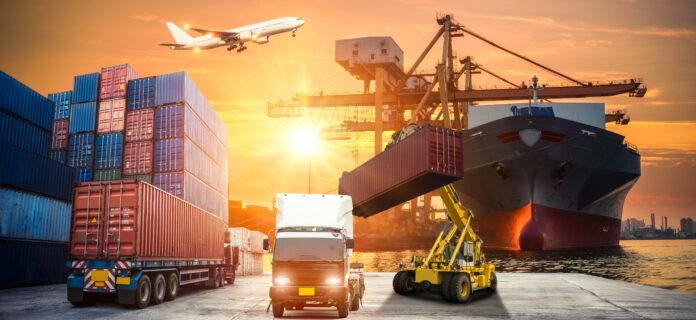

2022 has been another challenging year for supply chains, with the impact of Brexit and the pandemic still being felt, alongside new challenges in the form of the conflict in Ukraine and rising inflation.
Unfortunately, 2023 is likely to bring more of the same, as geopolitical issues continue to cause disruptions and economic pressures are predicted to worsen. Against the backdrop of uncertainty, businesses are also increasingly under pressure from consumers, stakeholders, investors and government to reduce the environmental impact of their operations. This paints an uncertain and potentially challenging picture for the airfreight sector.
Here, the executive directors at leading supply chain and logistics consultancy, SCALA, detail the issues supply chains are likely to experience in 2023, and the considerations airfreight businesses need to take into account when dealing with the continued strain.
Read more: Seven ways to optimise the end-to-end supply chain
Supply chain resilience – Phil Reuben, executive director at SCALA
With geopolitical and economic uncertainty set to continue, resilience and flexibility will continue to be key to successful business operations. Many businesses will be undertaking supply chain risk assessments to identify potential disruptions to operations. This includes taking the entire chain into consideration to identify any points with an overreliance on a specific supplier, geography, or technology, which could be prone to collapse if disruption were to occur. Once these points have been identified and assessed, businesses can put the necessary measures in place to mitigate these risks.
The airfreight industry has demonstrated its resilience in the past through the pandemic. However, with factors like its cost and environmental footprint going against it compared to other modes of transport, more businesses may begin to look at alternatives. Furthermore, we’re seeing more businesses shortening the supply chain. Onshoring and nearshoring to bring at least some processes closer to where goods are being sold makes operations more resilient to disruption, which could also contribute to a drop in airfreight demand.
It’s clear that the only certainty is uncertainty, and with sea freight rates returning to pre-Covid levels as a result of waning consumer confidence and deteriorating demand for container goods, further challenges and competition could be on the horizon. Therefore, remaining abreast of opportunities and potential threats in the industry will be key for airfreight logistics services weathering the storm.
Read more: Marelli boosts supply chain reactivity as it furthers partnership with o9
Coping with a reduced demand as inflationary pressures continue to impact the UK – Dave Howorth, executive director at SCALA
Cargo volumes have been affected significantly over the last 12 months by the conflict between Russia and Ukraine and the global economic slowdown caused by rising costs. The International Air Transport Association (IATA) expects air cargo volumes measured by cargo tonne kilometers (CTKs) to fall by 4% year-over-year in 2023, following an 8% year-over-year drop in 2022.
At the same time we’re seeing weakened demand, we’re also seeing an increase in air cargo capacity across the industry; a combination of new freighters and conversions as well as additional belly capacity as passenger air travel recovers. However, this overcapacity also means greater competition in the market.
Yet, it’s not all doom and gloom for the airfreight industry as many experts believe that the resolution of the Russia-Ukraine conflict could cause a rebound in consumer and business confidence, meaning increased demand. Airfreight providers need to ensure their offerings are competitive to retain custom in the quieter periods and be ready for demand to increase should confidence be restored.
The Jet Zero Strategy – Rob Wright, executive director at SCALA
Sustainability has been creeping up the agenda for businesses across every industry over the past few years, with supply chain professionals under increasing pressure to find greener alternatives and reduce their carbon footprint. Yet progress has been hindered by the pandemic, ongoing instability, and the economic situation, causing green strategies, targets, and initiatives to slip down the list of priorities to more imminent threats to business.
However, it’s only going to become increasingly important for businesses to make progress on their sustainability targets in 2023, not just with government net zero targets looming, but also because other businesses across the supply chain will be doing the same – seeking the find greener partners, providers and methods to reduce their overall environmental impact.
Sustainability is also being taken into consideration more by investors, consumers, and even potential employees. Businesses need to show they’re taking the issue seriously and have clear strategies – and real actions to back them up – to work towards a clear goal. The pressure to reduce the environmental impact of supply chain operations is only going to build – not just with regards to an organisation’s own carbon footprint, but also for their choices across the whole of the supply chain.
It’s likely that transportation will become one of the first areas to come under the lense, with the sector alone accounting for 27% of the UK’s national carbon emissions. Airfreight has nowhere to hide as one of the most harmful methods of transportation. It’s estimated that 1000km of air freight for one 2kg package is equivalent to 4.42kg CO2e, more than 21 times more than if the same package was transported via truck.
However, steps are being made in the right direction, and it’s likely that we’ll see more progress and innovation in this area in 2023. In July of last year, the government published its Jet Zero Strategy report, outlining its five-year plan to meet its commitment in bringing down UK aviation emissions to net zero by 2050. The production and availability of sustainable aviation fuel (SAF) is expected to become more readily available and cost effective and will play a key role in meeting this target.
The key for airfreight providers in 2023 is to stay abreast of new and alternative fuels and more sustainable methods. With greater competition in the market, sustainability is only going to become more important in retaining existing business, accessing new opportunities, and securing the support of investors, consumers, and other key stakeholders.
Final thoughts
Airfreight is going to continue to play an important role in supply chains as a fast and reliable means of international trading and creating new opportunities. It’s vital role in the UK economy cannot be overlooked, with an estimated £86bn of gross value dependent on it. However, as 2023 brings more uncertainty and challenges, flexibility and resilience will be key to survival and success.










